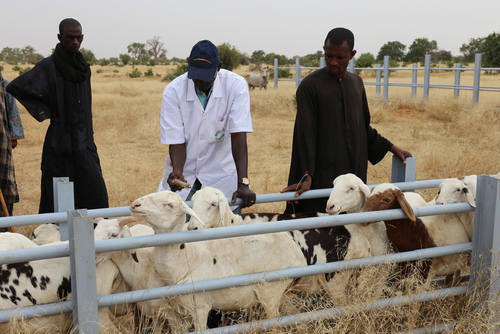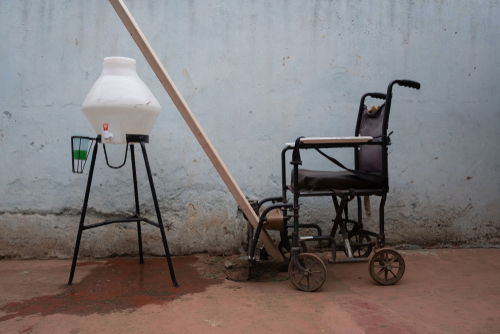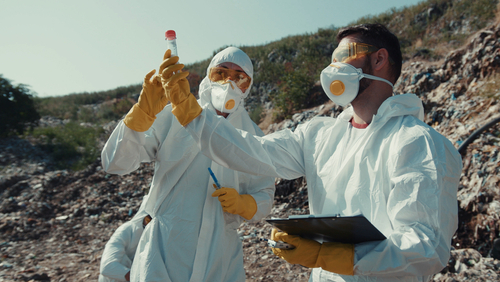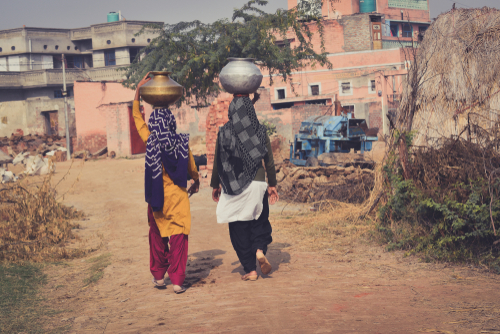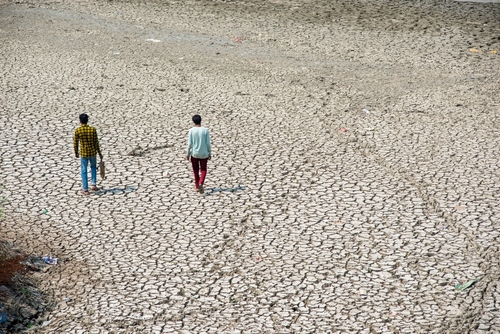October 04, 2023

Dangerous heatwaves exacerbate inequality in India.
Increasing frequency and severity of heatwaves in India highlight inequality in the country, as they disproportionately affect the health and well-being of people living in slums and other crowded areas with water shortages and long power outages. For example, in Kolkata, India, residents who are crowded into slums or informal settlements — one-third of the city’s population — are the most at risk for health problems, heat stroke, and death during heatwaves, while wealthier neighbors who live in air-conditioned homes on leaf-shaded streets will fare better. In a Washington Post article on the issue, OHT’s Dr. Ramanan Laxminarayan commented, “the rising temperatures will cause far more cases of heat stress and death while fostering the spread of cholera and dengue fever. Indians are disproportionately exposed to these effects, and it’s a huge risk that India is totally unprepared for.”[Washington Post]
Effective infection prevention practices prevent cross-transmission of C. difficile in hospital settings.
A longitudinal study in a US hospital intensive care unit (ICU) revealed that over a nine-month period, nine percent of included patients were colonized with Clostridiodes difficile. The colonized patients did not share similar genetic strains of C. difficile, indicating that they did not acquire the pathogen from the ICU. Whole-genomic sequencing analysis revealed that only 6 out of 584 patients acquired toxigenic C. difficile via cross-transmission, likely due to effective hospital infection prevention and control. Findings suggest that the burden of C. difficile infection (CDI) may be attributable to shifts from asymptomatic carriage to infection instead of cross-transmission between hospitalized patients. Asymptomatic carriers were more likely to develop CDI than non-carriers, requiring further investigation into strategies to prevent the transition from colonization to infection. [Nature Medicine]
Global antimicrobial use in animals decreased by more than 10 percent in three years.
The World Organization for Animal Health (WOAH) announced in the “Seventh Annual Report on Antimicrobial Agents Intended for Use in Animals” that global antimicrobial use in animals (in mg/kg) has decreased by 13 percent between 2017 and 2019 based on data from 80 countries that consistently quantified antimicrobial use in animals. Continent-specific estimates show that while decreases in antimicrobial use in animals were observed in Europe (-15 percent) and Asia, Far East, and Oceania (-25 percent), increases in antimicrobial levels were seen in Africa (+45 percent) and the Americas (+5 percent) over the three-year period. These data represent 80 percent of the world’s geography and 65 percent of the global animal biomass, indicating that despite existing areas for improvement, progress in reducing the utilization of antimicrobials in the animal health sector has been made. [WOAH]
Factors influencing vaccine uptake among teens in Brazil
Researchers examined the spread and factors influencing the uptake of the bacterial meningitis vaccine (Menacwy) among teenagers in Minas Gerais, Brazil, between 2020-2022. Using data from 853 municipalities, researchers found that in 2021, 60.58 percent of adolescents received the vaccine, the highest since its introduction. Higher vaccination rates were linked to improved social responsibility in health and public safety in 2020. In 2021, better vaccination coverage correlated with more people being part of the Family Health Strategy and higher spending on education. [BMC Infectious Diseases]
Heating, ventilation, and air conditioning filtration can reduce airborne virus transmission.
Many viruses of public health importance – including influenza viruses and SARS-CoV-2 – exhibit airborne transmission whereby aerosols expelled by humans or animals remain suspended in the air for extended periods. This property is particularly problematic in enclosed indoor settings with poor ventilation. A systematic review of studies investigating the effectiveness of heating, ventilation, and air conditioning (HVAC) filtration systems found that filtration that removes viruses from the air is associated with decreased virus transmission and incidence of infections. Although the installation or upgrading of HVAC systems can be expensive, the benefit of decreased illness due not only to viruses but also asthma, allergies, and other respiratory ailments can outweigh the cost. [PLOS Global Public Health]
Drug resistance and lower household income are linked to higher costs for TB patients in LMICs.
Researchers estimated the economic costs for patients with tuberculosis (TB) in low- and middle-income countries (LMICs) using data from 22 LMICs. Utilizing a Bayesian meta-regression approach, they calculated approximate per-patient costs in 2021 by cost category, country, drug resistance, and household income quintile. Direct medical costs per TB episode were estimated at US$211 across all 135 LMICs, average direct non-medical costs were $512, and indirect costs were $530. Higher cost outcomes per episode were associated with rifampicin-resistant TB and decreasing household income quintile. Over three-fourths of TB-impacted households in the poorest income quintile experienced catastrophic costs. Notably, patients who were not diagnosed through national TB programs and those who went undiagnosed or untreated were not included in the analysis, indicating the true economic burden of TB in LMICs is underestimated. [The Lancet Global Health]
WASH services in Addis Ababa, Ethiopia are not on track to reach sustainable development goals by 2030.
The United Nations Sustainable Development Goals (SDGs) call for universal access to safe water, sanitation, and hygiene (WASH) services by 2030. A quantitative cross-sectional study of 98 public and private schools in Addis Ababa, Ethiopia, from January to March 2020 found the schools to be below the global average for WASH services and not on target to reach universal coverage by 2030. Globally, 71 percent of schools have access to basic drinking water, 72 percent to basic sanitation services, and 58 percent to basic hygiene services. In comparison, this study found that 65.3 percent, 31.6 percent, and 36.7 percent of Addis Ababa schools had adequate access to basic water, sanitation, and hygiene services, respectively. [Environmental Health Impacts]
Food system reform is needed in Small Island Developing States for better health and resiliency.
Small Island Developing States (SIDS) are particularly sensitive to the negative effects of a globalized food system, including climate change, ecosystem degradation, and increased prevalence of nutrition-related diseases. Causal loop diagrams (CLDs) can help make sense of the drivers of unhealthy and unsustainable food systems in SIDS and guide the transformation from dependency on the global food system to the strengthening of local food systems. CLDs map a network of determinants and outcomes and identify reinforcing and balancing pathways that illustrate the complex socio-ecological nature of food systems. This understanding aids users in creating food system interventions to improve nutrition, mitigate climate change, and build resilience in SIDS. [PLOS Global Public Health]
Image from Canva

